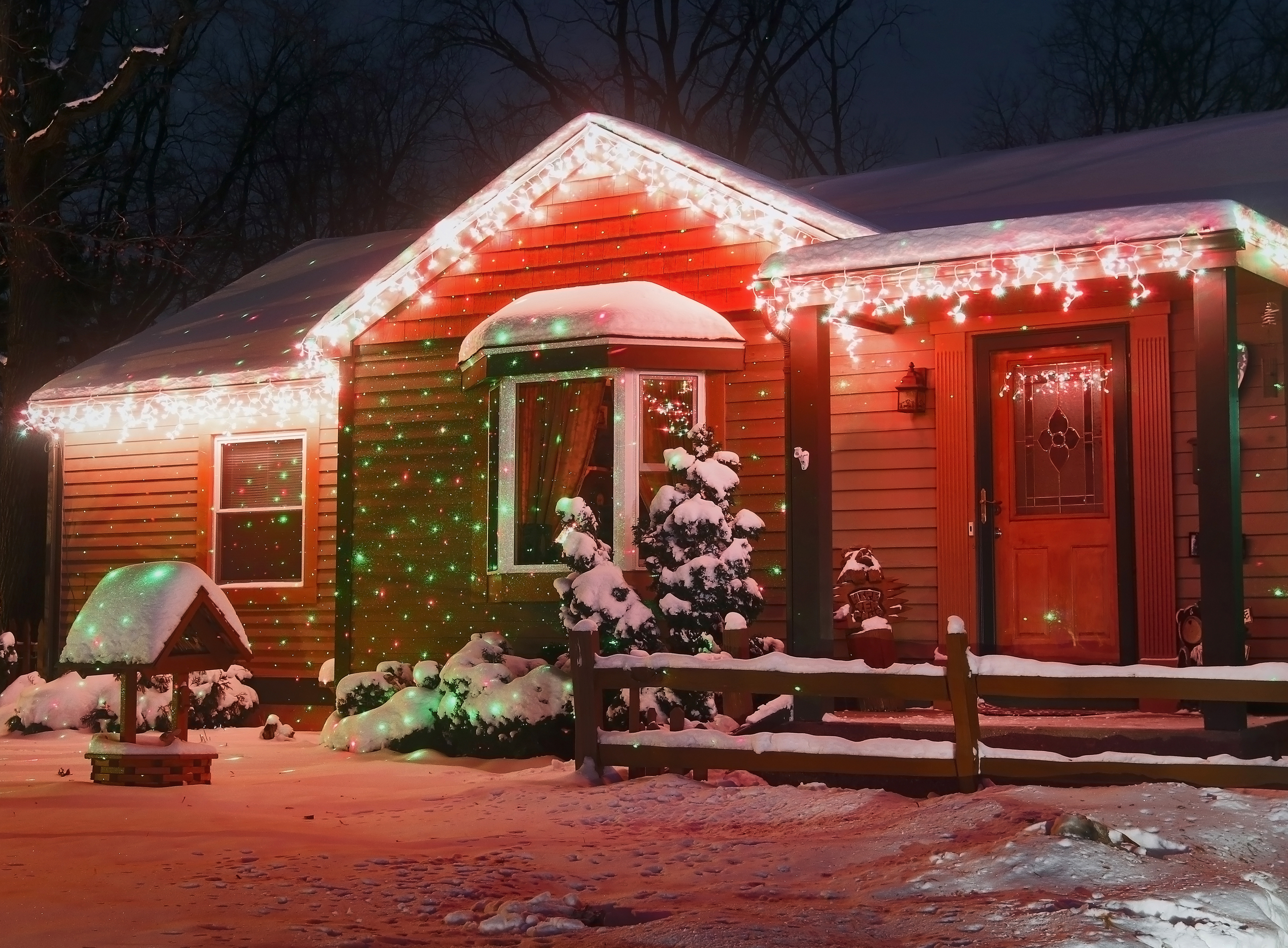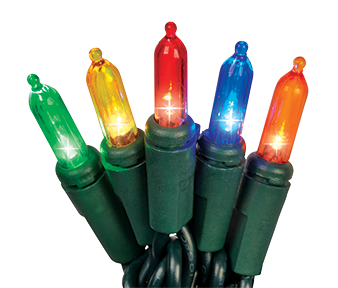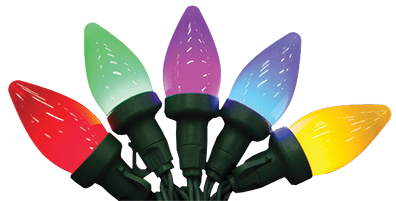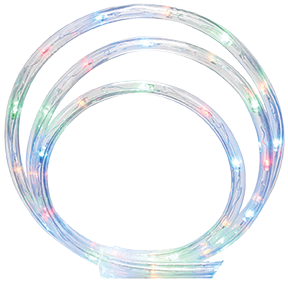Christmas Lights: A Crash Course

Believe it or not, there’s a lot of somewhat confusing details to keep track of when it comes to Christmas lights. We hope this quick overview will remove any potential confusion you may have when deciding on the best lighting strategy for your home this holiday season.
Understanding some basic terms:
Here’s a quick list of the basic terms you’ll want to know when walking through the light aisle
Incandescent:
The “traditional” style light bulb. These bulbs emit light by heating a filament until it glows. While still available, they are slowly being phased out in favor of…
LEDs:
Short for “Light Emitting Diode”. These lights use less voltage than incandescents, are smaller and tend to last longer. While being more expensive to purchase, they will cost much less in electricity to use.
Lightened Length:
The total length of the light string from the first bulb to the last. It indicates the spacing between bulbs for purposes of light coverage.
Connectability:
The number of individual light strands you can connect together without overtaxing a standard outlet. This is an important factor to be aware of to avoid blowing a fuse, or in avoiding more serious issues.
Continuous-On Lighting:
Indicates if a string of lights will stay lit if a bulb in the line fails.
Weather-Resistant:
Indicates that a string of lights is sealed against moisture. It also indicates a level of resilience against cold, rain, regular sun exposure and other factors that will make quick work of non-resistant lights.
Types of common Holiday Bulbs/Lighting:

Mini Lights:
The design of light most likely to be associated with the term “Christmas lights”. Designed to look like little candles with a small balled tip at the end, these lights are 1/4” in diameter at the base and 5/8” tall. Icicle and Net variations are also commonly part of this grouping.

C6 Bulbs:
Often described as “Strawberry-shaped”, these bulbs are considered by some to have a “Vintage” quality. Bulbs are 3/4” in diameter and 1-1/8” tall.
C7 Bulbs:
Similar to C6, but slightly larger and without the unique diffusion quality. 1” diameter and 1-1/2” tall.

C9 Bulbs:
Another popular classic design, these bulbs have a history of being the preferred bulb of many for outdoor yard displays intended to show from a distance. 1-1/4” diameter and 2-1/2” tall.
G Series Bulbs:
A looser defined sub-grouping of holiday lighting. More often than not they are round bulbs, but other shape variants are available. These bulbs also vary in size, but sizing them is easy once you know the trick. Simply divide the number after the “G” by 8, and round to the nearest number. Ex: G40 = 5.

Rope Lights:
Also known as “Flex Tape Lights”. These strings of micro lights encased in a tube-like flexible plastic create the illusion that the wrap itself is illuminated. Great for wrapping posts and with garlands.

Fairy String Lights:
A relatively new addition to the Christmas light arsenal. Instead of using traditional “bulbs”, these mini-LED’s are embedded into the thin wire. These types of lights are more often used for indoor lighting, due to their small size.
Outdoor Projector:
We may be cheating a little bit by ending the list with this option, but in recent years many people have found these to be either a great alternative to traditional displays, or a complement to their already established traditions. Some broadcast an image onto a surface, while others diffuse laser light into a twinkling field.
General safety tips for hanging lights:
Don’t decorate alone:
While putting a little garland on a banister or stringing a few lights over the fireplace is a relatively risk free task, when it comes to the more complicated stuff involving ladders and multiple tools, you should always have at least one more person on hand for safety.
Don’t use damaged light strings:
If a light string is showing signs of wear or breakage of the outer seal around the wire or other noticeable damage, we would recommend you throw them out. While it IS possible to address these issues with the right tools if you are skilled enough, the risk is great enough that we would advise against it.
Use proper extension cords:
While this is a good idea for ANY light display, if you need to connect a large string of lights to the outlet via an extension cord, make sure it’s rated for heavy-duty, high amperage use. For outdoor displays, make sure the cords are also rated for outdoor use.
Don’t wreak your property:
Putting up holiday lights often involves nails or carpentry staples. For outdoor displays, it’s best to not use nails/staples/etc. on roof shingles, on siding or on other surfaces where you could compromise the weather barrier of your house. For indoor decoration, consider using non-damaging adhesive strips and similar products.
Mind the cord when putting up the lights:
When nailing or stapling up the string, make sure not to puncture it. Also make sure to attach or secure ANY cord or line used in this process in such a way as to keep it from becoming entangled or pulled from the house.
Seriously, Mind the Cord:
When putting lights up, especially while on a ladder, it is a good idea to have a second person feed you the line, as to make sure they don’t get tangled or snagged.
Do not hang lit lights:
While we suggest you plug the lights in before you hang them to make sure they are in working order, we DO NOT suggest you keep them plugged in while hanging them up. Besides creating the potential to compromise your vision, you also create the possibility of an electric-based injury.
Use a good, sturdy ladder:
If you have to do any work requiring climbing, this is a must. Make sure it is set on solid, dry ground. Also remember to have a second person hold the ladder stable while you are on it.
Be aware of the weather:
Never put up lights during a wet weather event. If possible, try to put them up before you get snowfall or ice. Always be aware of safety in any home project.
While this is by no means the complete book on holiday decoration, we hope that you at least have a good foundational understanding on what you need to help your house become a Winter Wonderland for your friends and family.





